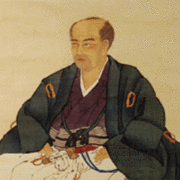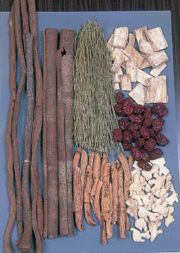Category:CD
m |
(→{{Bilingual|漢方 ≠ Chinese Medicine|Kampo ≠ Chinese Medicine}}) |
||
| Line 17: | Line 17: | ||
| | | | ||
;日本固有の医療としての漢方 | ;日本固有の医療としての漢方 | ||
| − | 「漢方」(文字通りでは漢の医方)は日本が[[Index:TCM|伝統中医学]](TCM)を独自に発展させたもので、16世紀には既に医術として確立していたようです。言葉自体は西洋医学(蘭方)に対する言葉として江戸時代中期に使われ始めました。TCMとの顕著な違いは'''漢方は西洋薬と同じ枠組みの中で処方される''' | + | 「漢方」(文字通りでは漢の医方)は日本が[[Index:TCM|伝統中医学]](TCM)を独自に発展させたもので、16世紀には既に医術として確立していたようです。言葉自体は西洋医学(蘭方)に対する言葉として江戸時代中期に使われ始めました。TCMとの顕著な違いは'''漢方は西洋薬と同じ枠組みの中で処方される'''という点です。日本において漢方はいわゆる代替医療ではなく、西洋医療と対立する概念でもありません。 |
<br/> | <br/> | ||
| − | 世界保健機構(WHO) | + | 世界保健機構(WHO)の用語集で漢方は「古代中国の医薬に基づいて日本で伝統的に使われる医薬」と定義されています。英訳として"the traditional Japanese medicine"としてしまうと鍼灸を含んでしまうため、英語訳には注意が必要です。 |
}} | }} | ||
| | | | ||
Revision as of 13:24, 25 February 2015
Kampo/Crude Drug Wiki (漢方・生薬Wiki)
Contents |
M e n u
| Crude-drug Top Gallery |
General Index | Names | Prescriptions | Books | Journals | Terminology | Chinese Medicines |
Kampo Medicine
Kampo ≠ Chinese Medicine
|
In the WHO document, Kampo is defined as "the medicine traditionally practiced in Japan, based on ancient Chinese medicine". We might call it "the traditional Japanese medicine" but this expression should include acupuncture and moxibustion treatment and is a larger concept than Kampo. |
 Portable Medicine Cabinet (Edo era; 1862) Reproduced with permission from Naito Museum of Pharmaceutical Science and Industry |
Why do we care Chinese or Japanese while not caring for English or German medicine?
|
Why are we sensitive to either Japanese or Chinese?
Western medicine is based on chemical structures, and each structure is (or was) patented. In this sense, their origin is clear. On the other hand, traditional (especially herbal) medicine is one major intellectual-property issue related to biological diversity. It is therefore important to clarify origins and install an appropriate international standard.
|
 Some of his recipes are still officially approved and used: Shiunko, Chuoko, and Jumihaidokuto. Picture is from Wikipedia.  Recipe for "Kakkonto", or pueralia root decoction (More) |
Kampo Standards
The New Standards for Kampo Formulas
In early 1970, the Ministry of Health and Welfare (now Health, Labor and Welfare) summarized the byelaw published as "Guideline for General Kampo Formulas" (Edited by MHW and the committee in FPMAJ, Published by Jiho), which has been known as 'The 210 formulas' for 30 years. In 2008, it underwent a significant revision and 213 formulas are listed as "Standards of Approval for the Kampo Formulation". The difference is introduced here (in Japanese).
Japanese Pharmacopoeia
(Japanese) Pharmacopoeia is a book with legal force containing directions to identify and qualify medicinal compounds that may be used in Japan. Its revision process therefore requires utmost attention. Since it is a legal document, there are some side effects such as for the scientific name of Cinnamon.
- Details (only in Japanese)
about this site
Crude Drug Information
In the Japanese Pharmacopoeia, around 160 crude drugs are listed. This site introduces their details with links to available Kampo formulas.
Literature Information
This site contains 7677 article information on Kampo formulas. They are listed at the bottom of each page for Kampo prescription.
Availability, Production Methods, Examinations
Image Gallery
Society Information
Pages in category "CD"
The following 8 pages are in this category, out of 8 total.